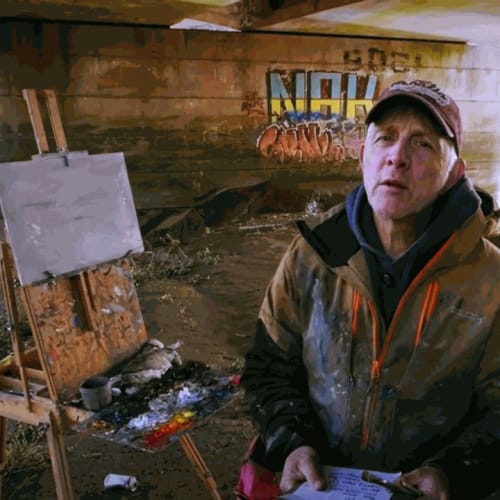We are delighted to bring you an article from NEAC Past President Peter Brown, AKA Pete the Street. Pete shares what inspires and motivates him when creating his plein air cityscapes. In particular, he talks about painting Bristol – the focus of his new solo exhibition and a forthcoming book – and how, despite living just down the A4 in Bath, it wasn’t until the pandemic that it really clicked…
I am often asked: “What made you paint that?”
The answer is, “It tickled me as I walked past.” But that is really just the start.
As you put the painting together and try to get things right, you start to learn about the place in front of you. You look at the street furniture, the shop signage, the cars that park for five minutes then leave, the tarmac and road markings, the pavement, the shoppers, the dog walkers…
And you slowly rebuild the street you are looking at in oil paint on a board. It is a way of getting to the point where you can say, ‘Yes, I know that place’ – I mean, as best you can.
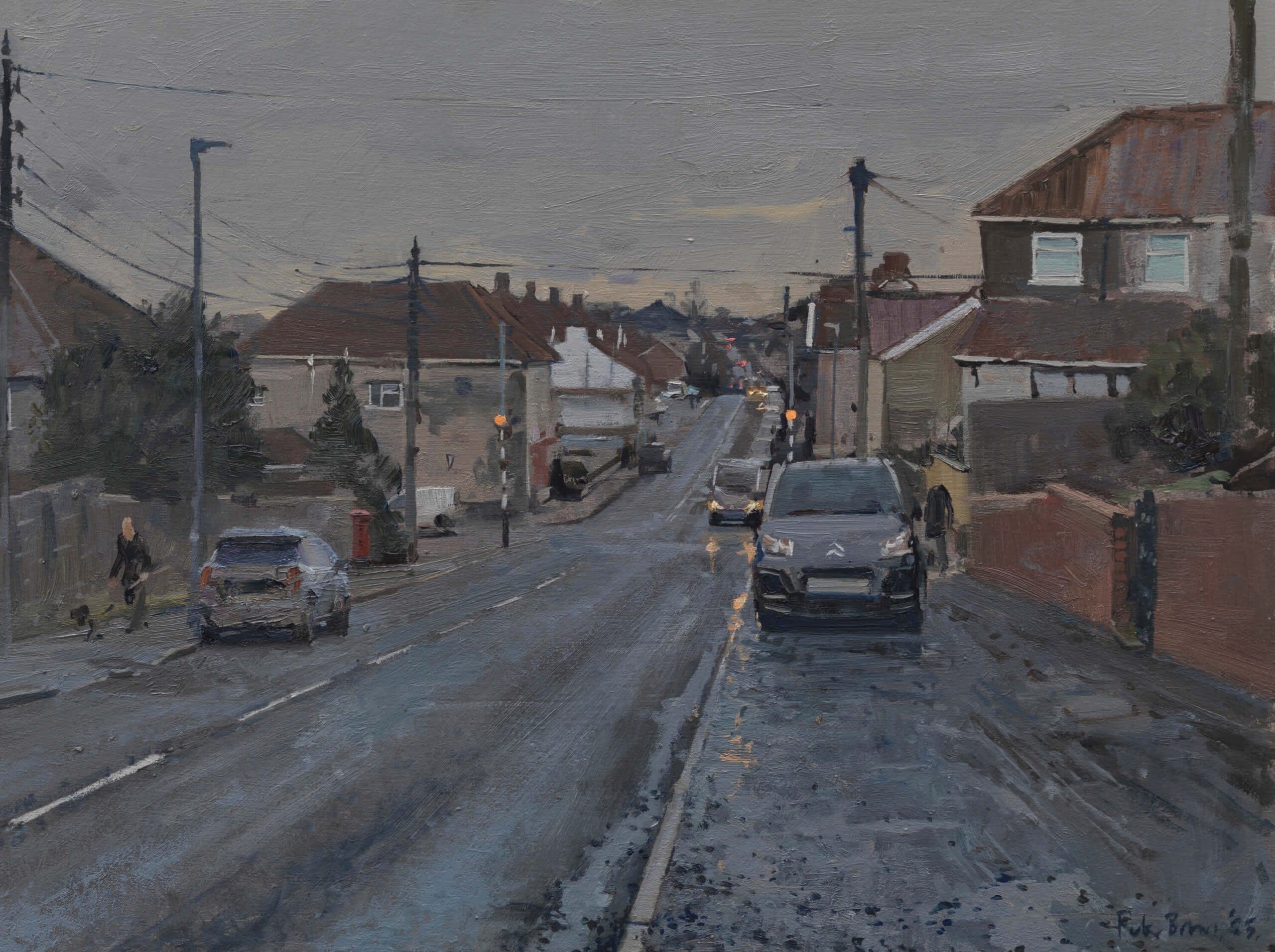
It is why the greatest compliment for me is not the lofty language of an art critic that very few of us understand, but when someone says, “I’ve lived here all my life and you’ve really captured this place, young man.” I have no idea why they always call me ‘young man’, but it’s an added bonus.
Painting Bristol
There are so many lumps and bumps that make up the landscape of this city, so many pockets, communities, so much paint, graffiti, colour... Wherever I am in Bristol, I am always thinking, “I wonder what’s around that corner or at the top of that hill.”
Also—perhaps because you are often surrounded by brightly coloured houses, or on the side of a hill, but probably because you geographically just are—you often feel like you are by the sea. You don’t get that in London.
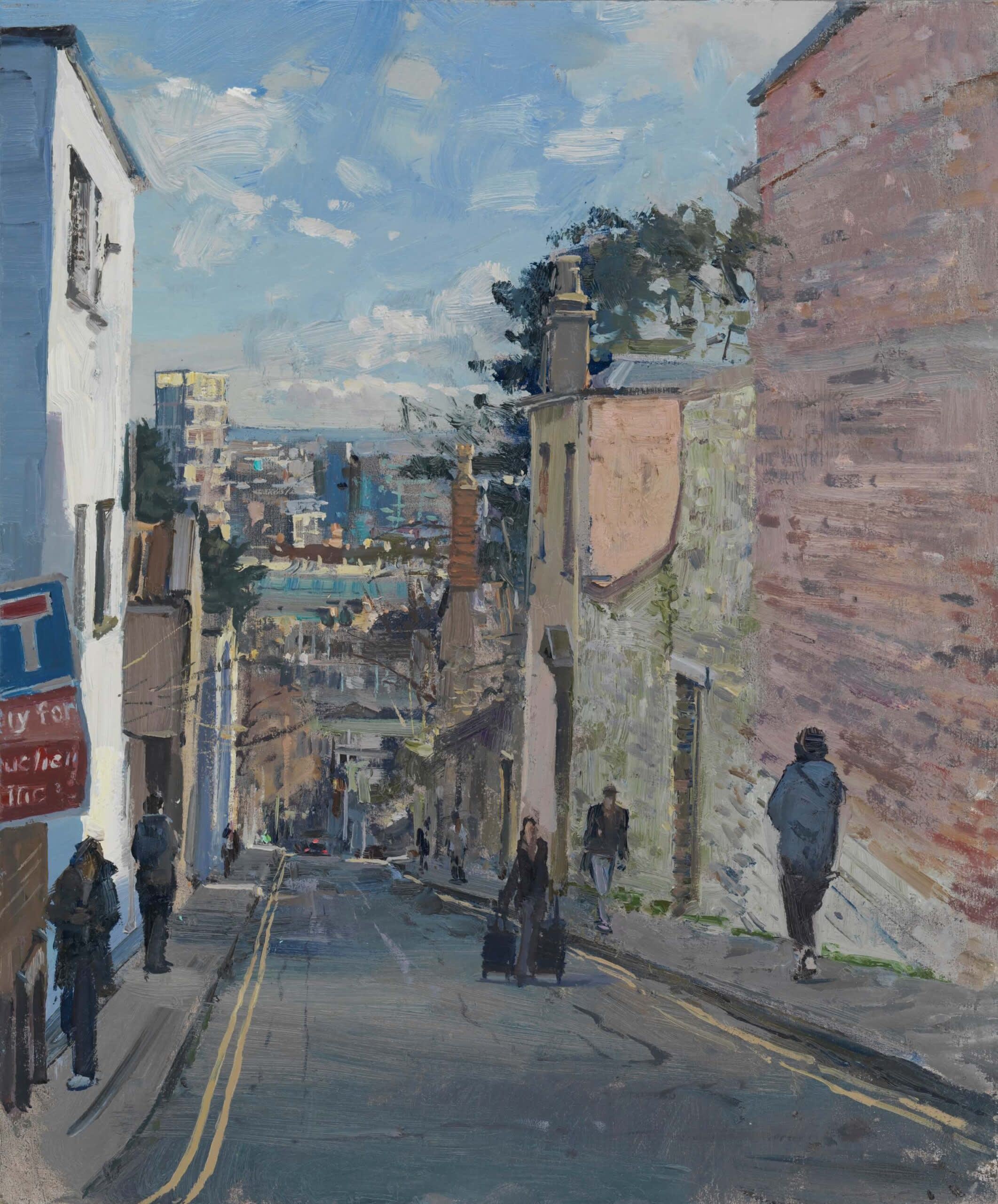
There is a kind of democratic beauty to Bristol, which comes from a desire to express oneself. Whether it is painting the exterior walls of your house a colour you like, or spraying graffiti on someone else’s wall. Thousands of random self-expressions work together to paint a beautiful and surprising city. I recently drove down Lypiatt Road in St George, a Victorian terraced street – in no way amazing architecturally, but the colours of the houses and a black and white (was it a zebra?) mural at the end of the road, turned it into something magical.
Bristol is a wonderful example of people making their own environment in which they live. Perhaps it is a bit grand to say this, but you get the impression here that the people’s voice has as much – if not more – sway than the planner or the architect.
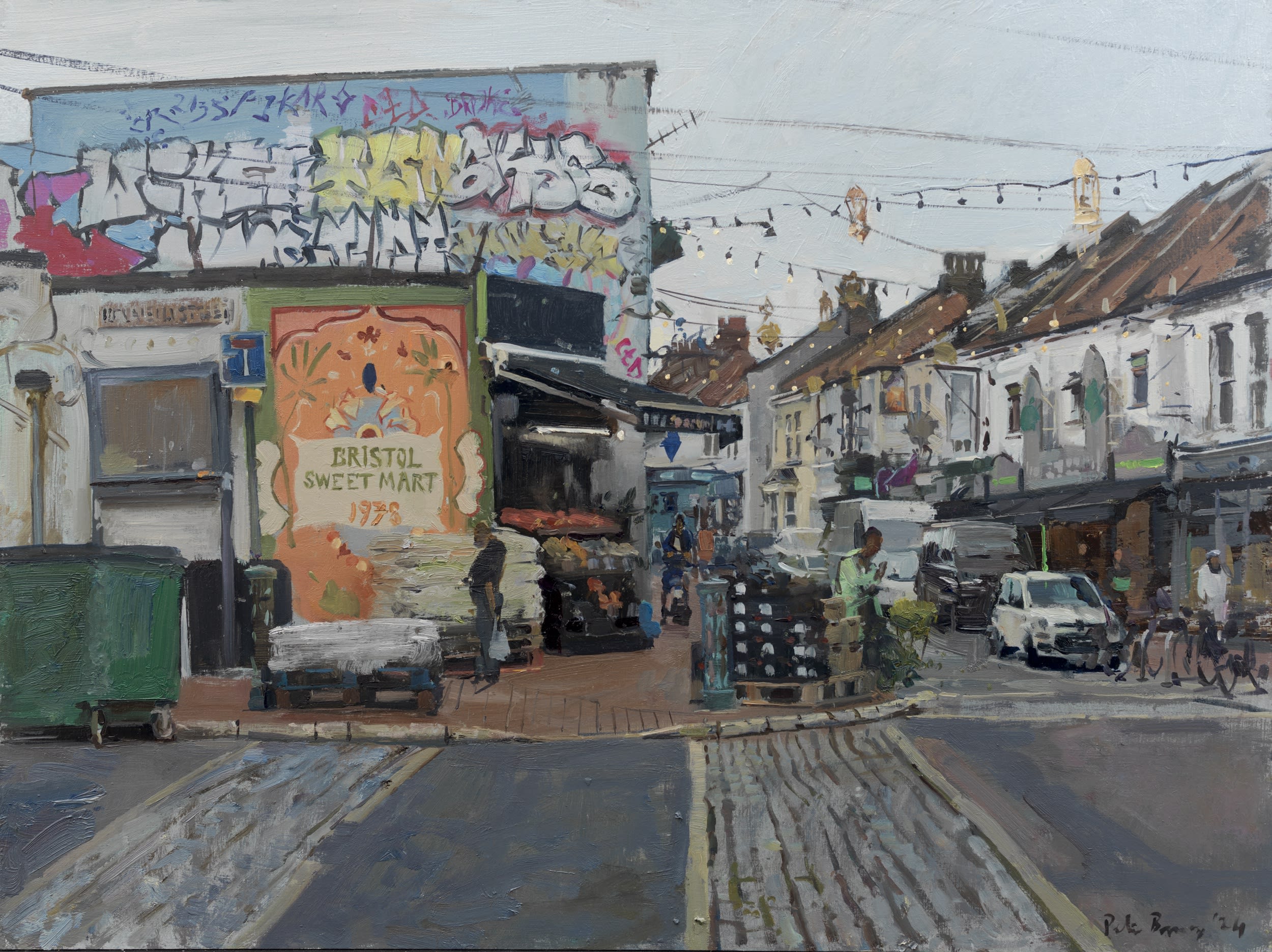
The first painting I did of Bristol was in the late 1990s. It was an oil painting on a 16 x 24 inch piece of hardboard of Colston Avenue from Quay head, before it was pedestrianised. There was a lot of tarmac in the foreground, criss-crossed with the yellow lines of a box junction, and my view was intermittently blocked by a lot of noisy traffic. It took a couple of goes. I finished it, and for some reason then thought, “Well, that’s Bristol painted!”
I went back over the hill to Bath – job done – and ignored the city for some years. I think someone persuaded me to paint Clifton at some point, so I did a couple of Sion Place and around that area.

It was not until the pandemic hit that I really got the urge to paint the city in more depth. I wanted to record how our cities were surviving with all the restrictions in their various stages. In London, I recorded the weeks up to, through, and then out of the lockdowns, witnessing the theatres and pubs closed, the Ritz shuttered up for the first time in its history, Trafalgar Square empty – eerie, interesting and ultimately depressing.
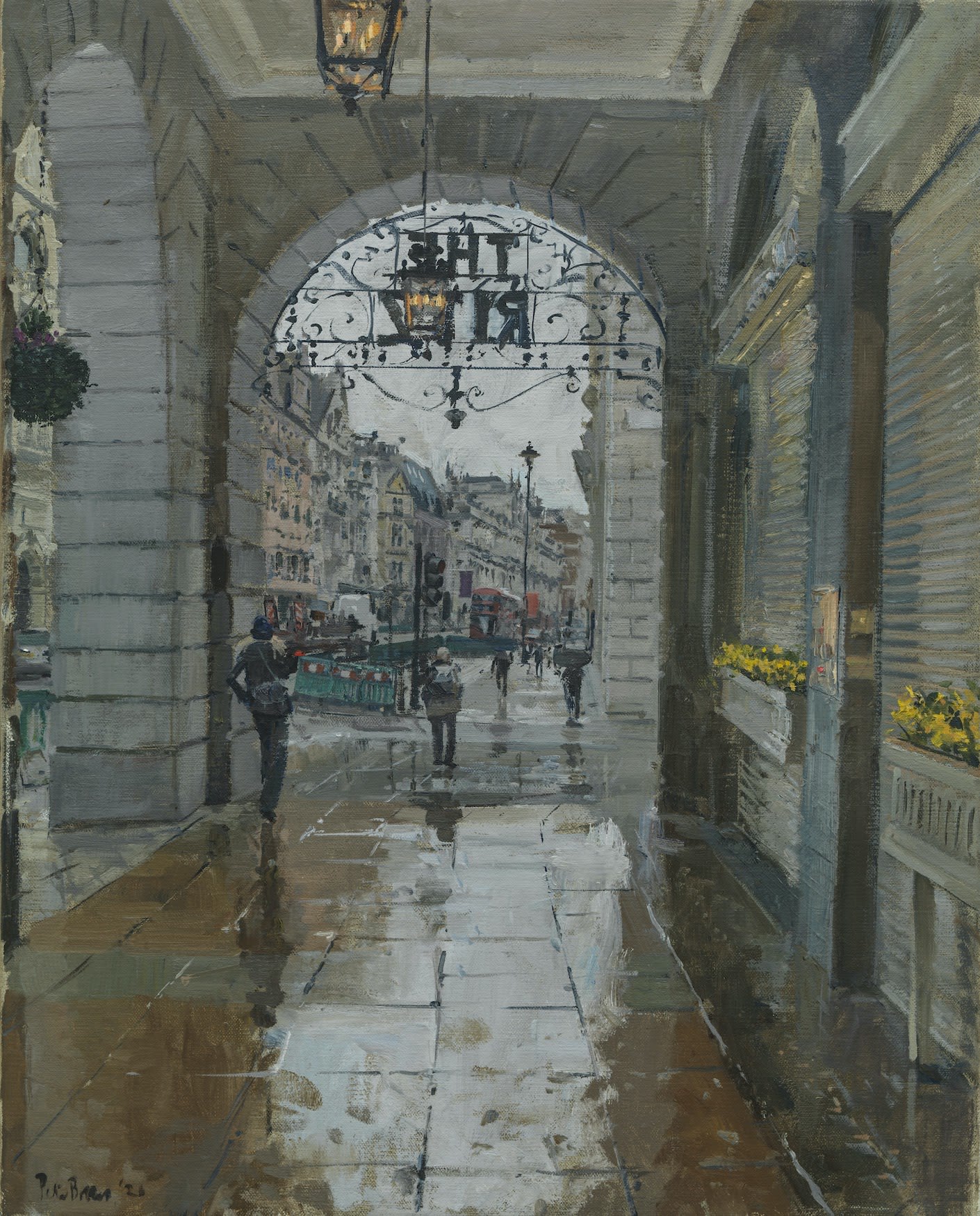
As the restrictions began to relax, I decided to look at Bristol. Driving into the city, I was buoyed by the ways businesses were finding to operate. The centre was quiet, but coffee shops and cafés were defiant, and we could not get enough. Queuing two metres apart, guided by fluorescent pavement markings. The skateboarders had free rein – well, perhaps they were just more visible now, and barber shops were cracking on. It was ace. I was still hovering around the centre – the Harbour and Colston Avenue, Cabot, but I was beginning to develop a real fondness for the place.
This was the start of it, but it took me a ridiculously long time to click – to decide to paint the city in its entirety, and try to discover it properly for myself.
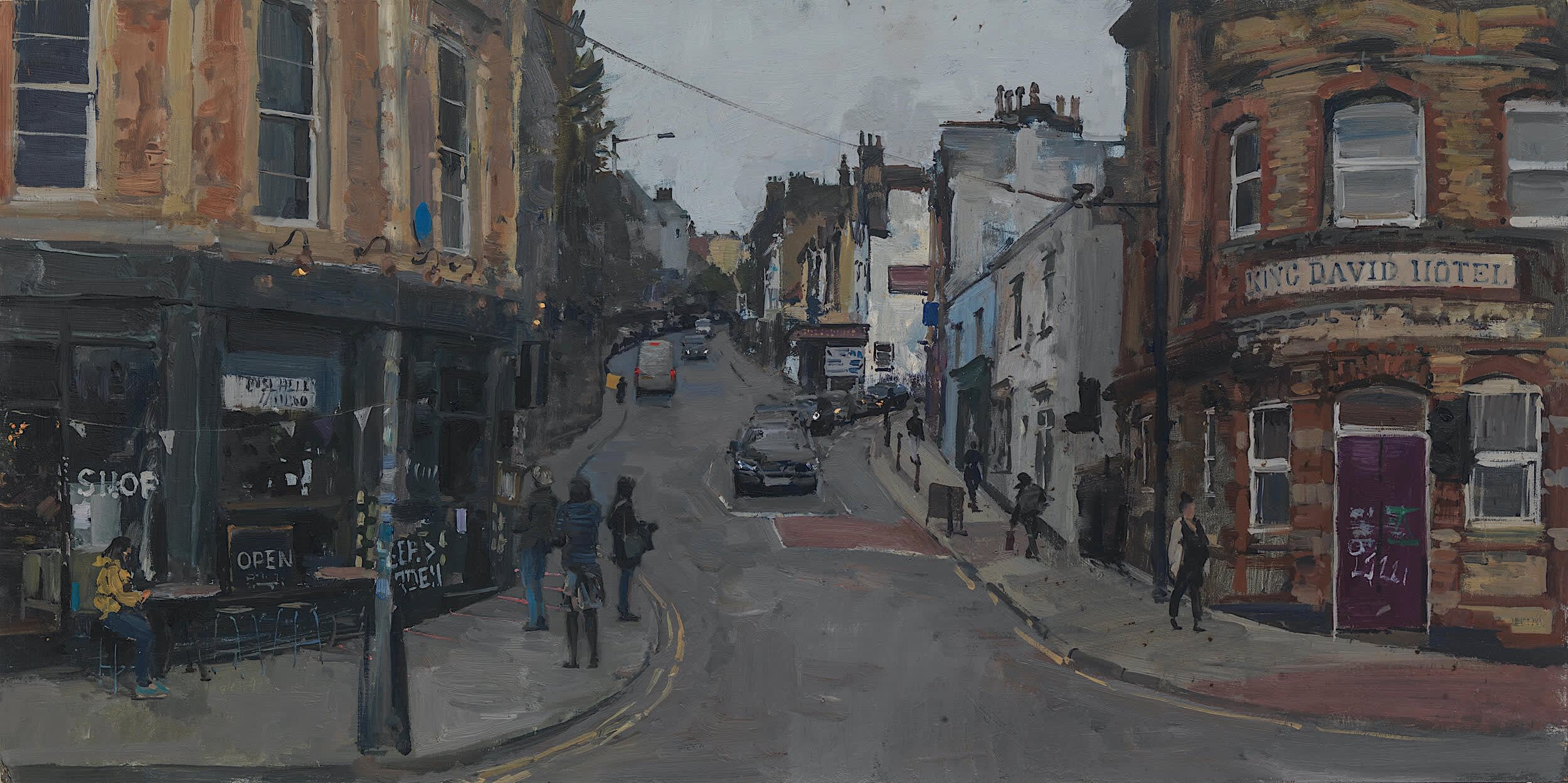
So, in September 2023, I began again. And where did I start? In Knowle, on a mini roundabout by Perrett Park, looking down a street of 1930s houses. From there I moved to Totterdown, Bedminster, Southville and so on. I was getting hooked. Actually, I was hooked from that mini roundabout.
I am not a Bristolian recording my home city. I am a tourist, but I hope I have gone some way to capturing the heart and soul of the city and what it feels like to be here.
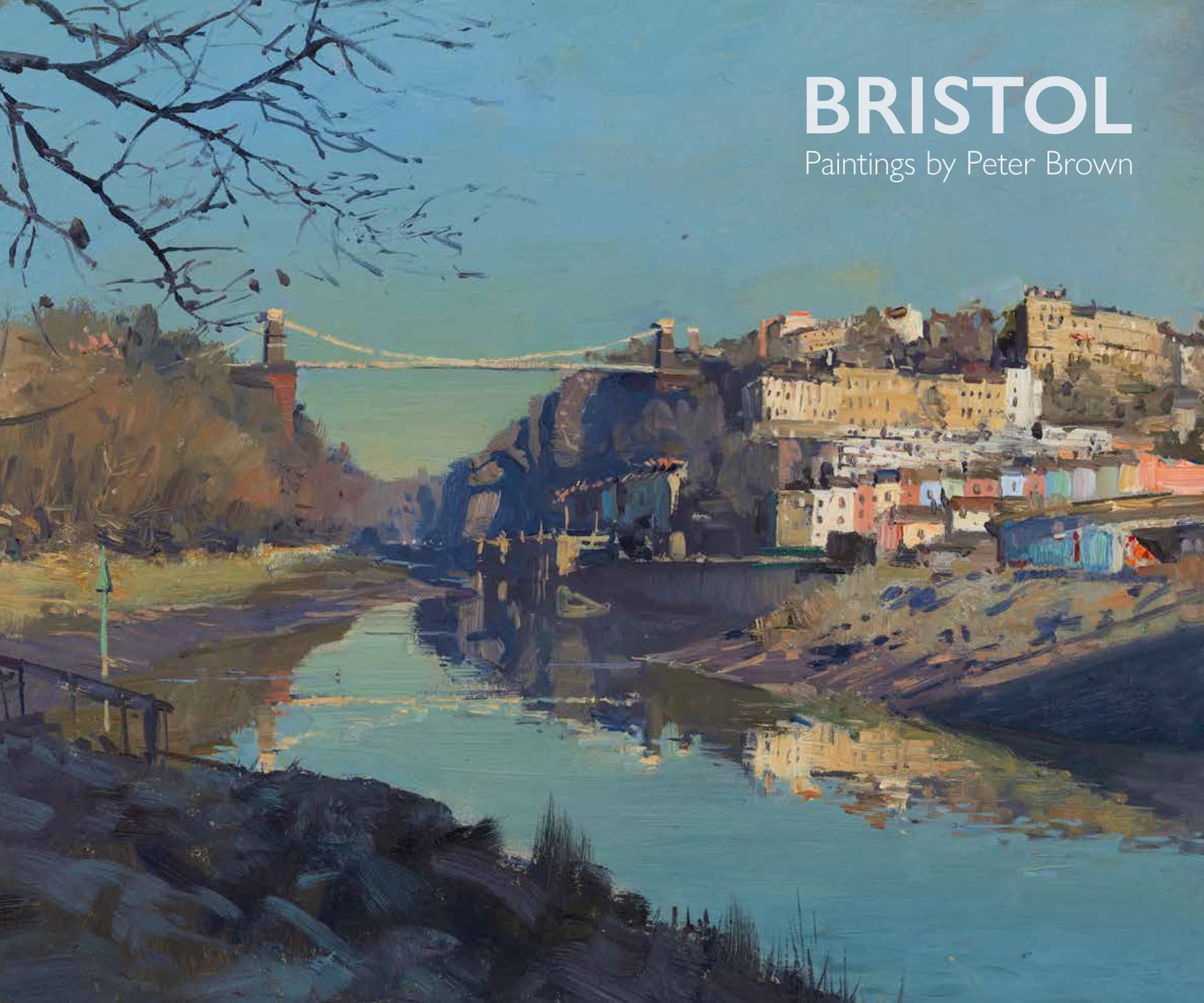
Peter’s exhibition of Bristol paintings runs from 1–11 May at 17 Midland Road, Bristol. Find out more and view the works online.
He’s also running a Kickstarter campaign to crowdfund the publication of his Bristol book, where you can pledge your support in return for a copy of the book, limited-edition prints, the chance to spend the day with Pete painting, or other rewards.
